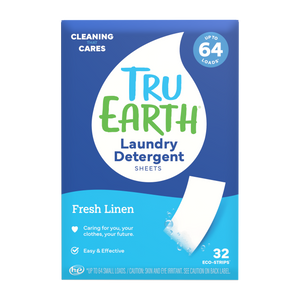When it comes to household cleaning, bleach is a common go-to product for many people. Its powerful disinfectant properties make it seem like an effective solution for tackling tough stains and killing germs. However, it's important to be aware of the potential dangers that come with using bleach in your home.
In this blog post, we will explore the various risks associated with bleach and why it's crucial to exercise caution when using it. By understanding these dangers, you can make informed choices about alternative cleaning methods and products that are safer for you, your family, and the environment.

Health Risks of Bleach Exposure
Using bleach can pose several health risks, especially when used improperly or in excessive amounts. It releases fumes that can irritate the eyes, nose, and throat, causing respiratory issues, allergies, and even asthma attacks in sensitive individuals. Prolonged exposure to bleach fumes may lead to chronic respiratory problems.
Ingesting bleach can result in burns and damage to the gastrointestinal tract. Additionally, bleach can cause skin irritation and dermatitis. We will delve into these health risks in more detail, providing insight into the potential dangers of bleach exposure and the importance of taking precautions to protect yourself and your loved ones.
Environmental Impact
Bleach is not only harmful to human health but also significantly impacts the environment. When disposed of down the drain, bleach can end up in water bodies and have adverse effects on aquatic life. The chlorine in bleach can react with organic matter in water, forming harmful byproducts such as chloramines and trihalomethanes.
These byproducts can be toxic and have been associated with various health concerns, including cancer. Additionally, the manufacturing process of bleach involves the use of chlorine, which can release toxic byproducts into the air and contribute to air pollution.
Corrosive Nature
One of the dangers of bleach is its corrosive nature. Bleach is highly reactive and can damage various surfaces, including fabrics, countertops, and flooring. It can weaken the fibers of fabrics, causing them to deteriorate over time. When bleach comes into contact with certain substances, such as ammonia or vinegar, it can produce toxic fumes that can be harmful when inhaled.
Mixing bleach with ammonia, for example, creates chloramine gas, which can cause respiratory problems and even be fatal in high concentrations.
Safer Alternatives to Bleach
Fortunately, there are safer alternatives to bleach that can effectively clean and disinfect your home without the associated risks. Hydrogen peroxide is a non-toxic alternative that can kill bacteria, viruses, and molds. It can be used as a disinfectant, stain remover, and fabric brightener.
Vinegar is another versatile cleaning agent that can kill germs, remove odors, and dissolve mineral deposits. Baking soda is a gentle abrasive that can be used to scrub surfaces and eliminate odors. These alternatives are not only safer for your health but also better for the environment.
Precautions and Safe Usage
If you still choose to use bleach, it's important to take proper precautions and use it safely. Always follow the instructions on the label and avoid mixing bleach with other cleaning products. Ensure adequate ventilation by opening windows or using fans when using bleach indoors. Wear protective gear, such as gloves and goggles, to prevent direct contact with bleach.
Properly dilute bleach according to the recommended ratios to avoid excessive exposure. After using bleach, rinse surfaces thoroughly with water to remove any residue. By adhering to these safety measures, you can minimize the risks associated with bleach and protect yourself and your household.

Understanding the Risks of Using Bleach in Your Home
While bleach may seem like a powerful cleaning agent, it's essential to be aware of its potential dangers to your health and the environment. By understanding the risks and exploring safer alternatives, you can make informed decisions about the cleaning products you use in your home.
Choose products that prioritize both effectiveness and safety and embrace greener cleaning practices to create a healthier and more sustainable living environment for you and your loved ones. By taking these steps, you can contribute to a cleaner and safer home while minimizing your environmental impact.

